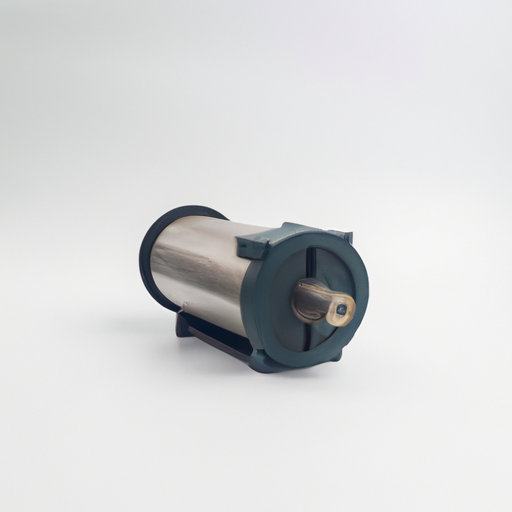Stepping motors are a type of electric motor that converts electrical pulses into mechanical movement. They are widely used in various applications such as robotics, 3D printers, CNC machines, and more. Stepping motors have several unique features that make them ideal for these applications. In this article, we will explore the product features of stepping motors in detail.

2. High Torque at Low Speeds: Stepping motors are known for their high torque at low speeds. This makes them ideal for applications that require precise control over the speed and position of the motor. Stepping motors can provide high torque even at low speeds, making them suitable for applications that require high precision and accuracy.
3. Open-loop Control: Stepping motors operate in an open-loop control system, which means that they do not require feedback from sensors to determine their position. Instead, the motor controller sends a series of electrical pulses to the motor, which moves in discrete steps. This simplifies the control system and reduces the overall cost of the system.
4. Low Maintenance: Stepping motors are known for their reliability and low maintenance requirements. Unlike other types of motors that require regular maintenance and lubrication, stepping motors are relatively maintenance-free. This makes them ideal for applications where downtime must be minimized.
5. High Resolution: Stepping motors have a high resolution, which means that they can move in very small increments. This makes them ideal for applications that require precise control over the position of the motor. Stepping motors can move in steps as small as 1.8 degrees, providing high resolution and accuracy.
6. Easy to Control: Stepping motors are easy to control using a simple motor controller. The controller sends a series of electrical pulses to the motor, which moves in discrete steps. This makes it easy to program the motor to move to a specific position or speed, making them ideal for applications that require precise control.
7. Low Cost: Stepping motors are relatively inexpensive compared to other types of motors. This makes them ideal for applications where cost is a factor. Stepping motors provide high torque, precision, and reliability at a low cost, making them a popular choice for a wide range of applications.
8. Quiet Operation: Stepping motors operate quietly compared to other types of motors. This makes them ideal for applications where noise must be minimized, such as in medical devices or consumer electronics. Stepping motors provide smooth and quiet operation, making them suitable for a wide range of applications.
In conclusion, stepping motors have several unique features that make them ideal for a wide range of applications. Their precise positioning, high torque at low speeds, open-loop control, low maintenance requirements, high resolution, easy control, low cost, and quiet operation make them a popular choice for robotics, automation systems, 3D printers, CNC machines, and more. Stepping motors provide high performance, reliability, and precision at a low cost, making them a versatile and cost-effective solution for various applications.
Stepping motors are a type of electric motor that converts electrical pulses into mechanical movement. They are widely used in various applications such as robotics, 3D printers, CNC machines, and more. Stepping motors have several unique features that make them ideal for these applications. In this article, we will explore the product features of stepping motors in detail.

2. High Torque at Low Speeds: Stepping motors are known for their high torque at low speeds. This makes them ideal for applications that require precise control over the speed and position of the motor. Stepping motors can provide high torque even at low speeds, making them suitable for applications that require high precision and accuracy.
3. Open-loop Control: Stepping motors operate in an open-loop control system, which means that they do not require feedback from sensors to determine their position. Instead, the motor controller sends a series of electrical pulses to the motor, which moves in discrete steps. This simplifies the control system and reduces the overall cost of the system.
4. Low Maintenance: Stepping motors are known for their reliability and low maintenance requirements. Unlike other types of motors that require regular maintenance and lubrication, stepping motors are relatively maintenance-free. This makes them ideal for applications where downtime must be minimized.
5. High Resolution: Stepping motors have a high resolution, which means that they can move in very small increments. This makes them ideal for applications that require precise control over the position of the motor. Stepping motors can move in steps as small as 1.8 degrees, providing high resolution and accuracy.
6. Easy to Control: Stepping motors are easy to control using a simple motor controller. The controller sends a series of electrical pulses to the motor, which moves in discrete steps. This makes it easy to program the motor to move to a specific position or speed, making them ideal for applications that require precise control.
7. Low Cost: Stepping motors are relatively inexpensive compared to other types of motors. This makes them ideal for applications where cost is a factor. Stepping motors provide high torque, precision, and reliability at a low cost, making them a popular choice for a wide range of applications.
8. Quiet Operation: Stepping motors operate quietly compared to other types of motors. This makes them ideal for applications where noise must be minimized, such as in medical devices or consumer electronics. Stepping motors provide smooth and quiet operation, making them suitable for a wide range of applications.
In conclusion, stepping motors have several unique features that make them ideal for a wide range of applications. Their precise positioning, high torque at low speeds, open-loop control, low maintenance requirements, high resolution, easy control, low cost, and quiet operation make them a popular choice for robotics, automation systems, 3D printers, CNC machines, and more. Stepping motors provide high performance, reliability, and precision at a low cost, making them a versatile and cost-effective solution for various applications.